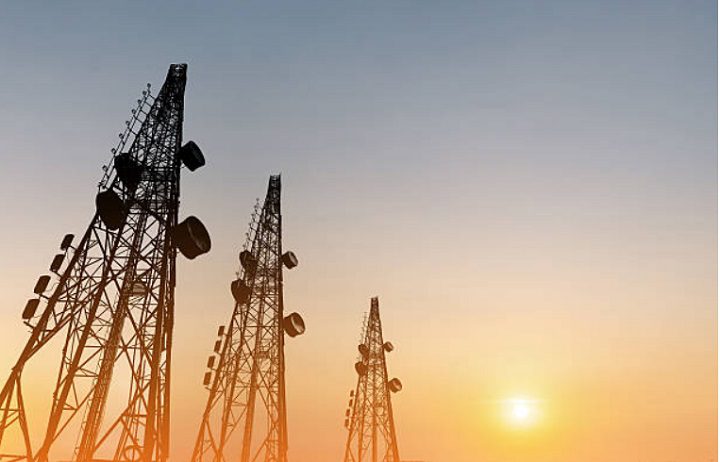Just a few years ago, none of us could have imagined downloading an app in seconds without WiFi access or travelling from state to state without paying additional roaming costs. How far we have come! In 2023, technology advanced at a breakneck pace, and the Indian telecom sector went through a significant transition. Today, with a robust 1.17 billion active subscribers, India firmly establishes itself as the world’s second-largest telecom market, and the size of the Indian telecom market is expected to grow from US$ 44.43 billion in 2023 to US$ 69.62 billion in 2028. According to a report prepared by the GSM Association (GSMA) in collaboration with the Boston Consulting Group (BCG), the CAGR is 9.40%, contributing significantly to India’s GDP.
Some major highlights of the year gone by include the passing of the Telecommunications Bill 2023. This bill introduced changes such as eliminating licensing requirements, introducing biometric authentication for telecom customers, and allowing companies to repurpose spectrum, enabling the transition of 4G spectrum for 5G use. Another highlight includes the industry’s quick and flexible reaction to the accelerating wave of AI applications and the efficient navigation of the complexities that arose due to increased global connectivity. Especially with the progressing rollout of 5G, telecom entities have not only adapted but evolved in this dynamic environment.
24, several trends are set to shape the telecom and business market, collectively paving the way for enhanced industry efficiency. Industry leaders are looking forward to a new year full of innovation, digital advancements, and new-age tech which will transform telecommunications as we know it.
1. Internet of Things (IoT)
Today, the Internet of Things (IoT) is considered a vital aspect of the future of digital transformation. India is expected to have nearly 500 million IoT devices by 2025, creating new unique opportunities for innovation. So the next time you ask Alexa to play a song or tell Siri to set an alarm for tomorrow, here’s a reminder that the futuristic technology that we dreamed of in the 90s is already here.
That’s not all. We’re now looking at solutions to help with the ‘Smart City’ initiative in India. These initiatives plan to create efficient cities with enhanced infrastructure and services, by including smart tech in urban planning. IoT incorporation within such communities will look something like this: inclusion of smart street lights on every street, electronic traffic control networks, smart emergency response systems, better water and waste management systems, and e-clinics that will lead to more efficient safety and healthcare delivery systems.
Today, IoT devices form a vibrant ecosystem of devices, sensors, infrastructure, and computing elements shaping a future where connectivity is not just a luxury but a necessity.
2. Full 5G Network Coverage Nationally
The rollout of 5G is the next big upgrade in the telecommunications sector, and 5G services are now available in all major cities in India. By 2024, 5G will be more than just a buzzword in the industry, promising super fast internet speeds, better connectivity, and overall, more efficient communication channels. Not only that, the implications of a fully developed 5G network are far-reaching, with increased network capacity and lower latency rates becoming a game-changer for applications that demand real-time responsiveness and minimum delays.
What pushes its popularity is how it is set to benefit multiple industries, from healthcare to manufacturing, from agriculture to energy grids, from emergency services to urban planning. All this and more is what makes 5G a revolutionary product – it isn’t just connecting our phones, but paving the way for a more advanced lifestyle.
As we move forward, the telecom sector will have to tackle challenges concerning spectrum distribution, infrastructure construction, and guaranteeing that the advantages of 5G are accessible to all. Tailoring a more efficient and connected future and achieving 5G’s full promise will depend on overcoming these obstacles.
3. Cloud Computing
Another rapidly growing technology trend is cloud computing, which goes hand in hand with the growth of IoT and ML applications. The cloud is essentially about providing scalable and essential computing resources on demand. This allows organizations to scale their computing resources according to fluctuating demands seamlessly. So be it Google Cloud where you can share and host photos without actually downloading them, or SaaS applications like Slack or Clickup that you use daily for operational and management tools, cloud computing plays an essential part in our personal and professional lives.
While some telecommunication companies have approached cloud adoption cautiously, Azure, AWS, and GCP—the top three cloud service providers—have continued to invest in India. AWS may invest roughly USD 4.4 billion by 2030 and Microsoft intends to build its largest data center in Hyderabad, Telangana. These big corporate investments indicate that the Indian cloud sector is rapidly expanding. It has been projected that India is on its way to becoming a US$ 26 trillion GDP economic superpower by 2047, becoming home to one of the largest groups of young tech-savvy youth in India.
From advanced connectivity to advanced integration solutions for businesses that span devices, platforms, and infrastructure, cloud startups are playing a major role in shaping the telecom landscape. This is why when telecommunications companies adopt cloud computing, they gain the flexibility and scalability needed to meet the changing demands of the digital age and be future-ready.
4. Emerging Technologies (AI, Machine Learning, and Edge Computing)
Who hasn’t heard about the AI wave – especially generative AI – taking over the world? Generative AI like Fireflies, ChatGPT, DALL-E, and now Google Bard, not only impress but efficiently reduce the extra human effort required to answer queries and produce content at the drop of a hat. With the expanding use of AI technologies in telecom, there is a higher need for specialists who can integrate, maintain, and optimize AI systems. These people will be critical to ensuring that AI-powered networks, devices, and services run smoothly thereby generating more jobs. Thanks to the deployment of 5G, the number of AI/ML professionals in telecommunications services has increased from 7% to 20% of the workforce. Experts predict that this percentage is set to rise to 23% by the end of 2024, as telcos continue to hire for these roles.
Today, telecom carriers are using Artificial Intelligence (AI) for a variety of purposes thanks to the available abundance of data. From improving consumer experiences to maximizing network efficiency, along with the advent of AI-driven virtual assistants, personalized recommendation engines, and proactive issue resolution, AI is improving overall user experience.
Similarly, advances in machine learning enable computers to be used basis the algorithms and patterns drawn from data and deep learning, making tasks easier for humans. The introduction of 5G enables Massive Machine-Type Communications (mMTC), allowing for the development of high-density IoT networks ranging from industrial IoT to smart homes.
Edge computing is another trend that is transforming the telecommunications industry by reducing latency, increasing bandwidth, and simplifying maintenance processes.
The telecom sector is at a turning point as it navigates a world of swiftly advancing technology and shifting consumer demands. In addition to defining the industry and the future, these cutting-edge trends—IoT, 5G full network coverage, AI and ML, cloud computing, and edge computing—will also provide answers to the problems of the present. The key to opening the door to a connected, more productive, and technologically sophisticated future lies with telcos as they continue to develop and adapt. I, for one, can’t wait to see what the future holds. Can you?
Author
An article authored by Dhananjay Joshi, the Managing Director of Summit DigiTel.




















